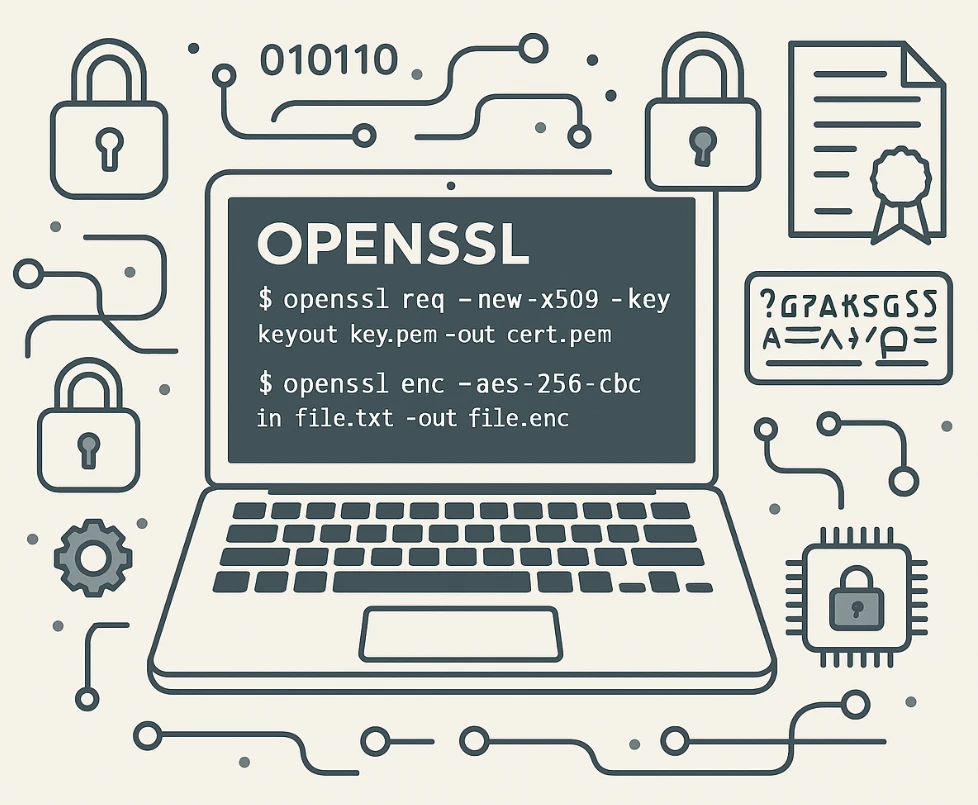OpenSSL is a powerful open-source toolkit that implements the SSL and TLS protocols. Whether you’re a system administrator, developer, or security professional, these essential OpenSSL commands will help you manage certificates and secure connections effectively.
1. Decoding and Examining Certificates
View Certificate Details
This command decodes a certificate file and displays all its information, including expiry date, issuer, and subject:
openssl x509 -in certificate.crt -text -noout
Check Certificate Expiration Date
If you only need to know when a certificate expires, use:
openssl x509 -in certificate.crt -noout -enddate
Quick Certificate Overview
For a summary of the certificate’s key information:
openssl x509 -in certificate.crt -noout -subject -issuer -dates
2. Verifying Certificate and Key Matching
Check if a Certificate and Private Key Match
Compare the output of these two commands. If the hash values are identical, the private key matches the certificate:
openssl pkey -in privateKey.key -pubout -outform pem | sha256sum
openssl x509 -in certificate.crt -pubkey -noout -outform pem | sha256sum
Verify a Private Key
Check if a private key is valid and not corrupted:
openssl rsa -in server.key -check
3. Working with Certificate Signing Requests (CSRs)
Create a New CSR with a New Private Key
Generate a new CSR and 2048-bit private key:
openssl req -newkey rsa:2048 -nodes -keyout domain.key -out domain.csr
Verify a CSR
Examine the contents of a CSR to ensure it’s correct:
openssl req -in domain.csr -noout -text
Create a CSR from an Existing Private Key
If you already have a private key and need to create a new CSR:
openssl req -new -key existing.key -out domain.csr
4. Testing SSL/TLS Connections
Check a Remote SSL/TLS Connection
View the certificate chain presented by a server:
openssl s_client -connect example.com:443
Check for Specific SSL/TLS Protocol Support
Test if a server supports TLS 1.2:
openssl s_client -connect example.com:443 -tls1_2
Display the Full Certificate Chain
Show all certificates in the chain including intermediates:
openssl s_client -connect example.com:443 -showcerts
5. Converting Certificate Formats
Convert PEM to DER Format
openssl x509 -in cert.pem -outform der -out cert.der
Convert DER to PEM Format
openssl x509 -in cert.der -inform der -outform pem -out cert.pem
Convert PEM to PKCS#12 (PFX)
Combine certificate and key into a single PKCS#12 file (often used with Windows):
openssl pkcs12 -export -out certificate.pfx -inkey privateKey.key -in certificate.crt -certfile ca-chain.crt
6. Creating Self-Signed Certificates
Generate a Self-Signed Certificate
Create a self-signed certificate valid for 365 days:
openssl req -x509 -newkey rsa:2048 -nodes -keyout self-signed.key -out self-signed.crt -days 365
7. Certificate Chain Verification
Verify a Certificate Against a CA Bundle
Check if a certificate is trusted based on a CA bundle:
openssl verify -CAfile ca-bundle.crt certificate.crt
Practical Tips
- Always back up your private keys before making changes
- Keep private keys secure and limit access to authorized personnel only
- Set calendar reminders for certificate expiration dates
- Consider using automated certificate management tools for larger deployments
OpenSSL is an essential tool for managing SSL/TLS certificates. Bookmark this page for quick reference when working with certificates in your daily operations.
